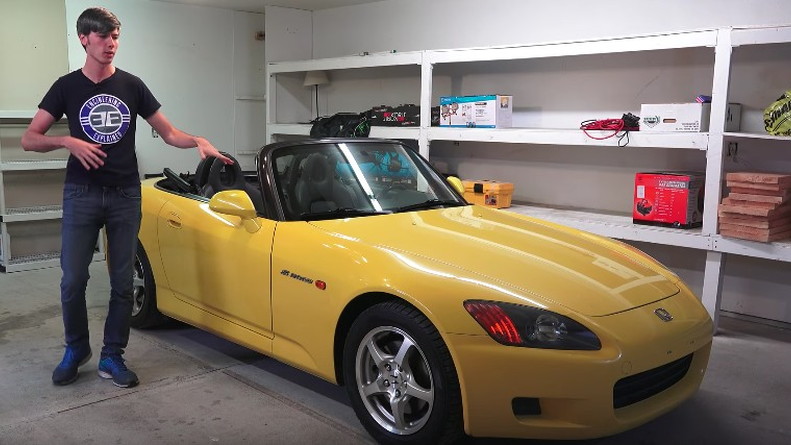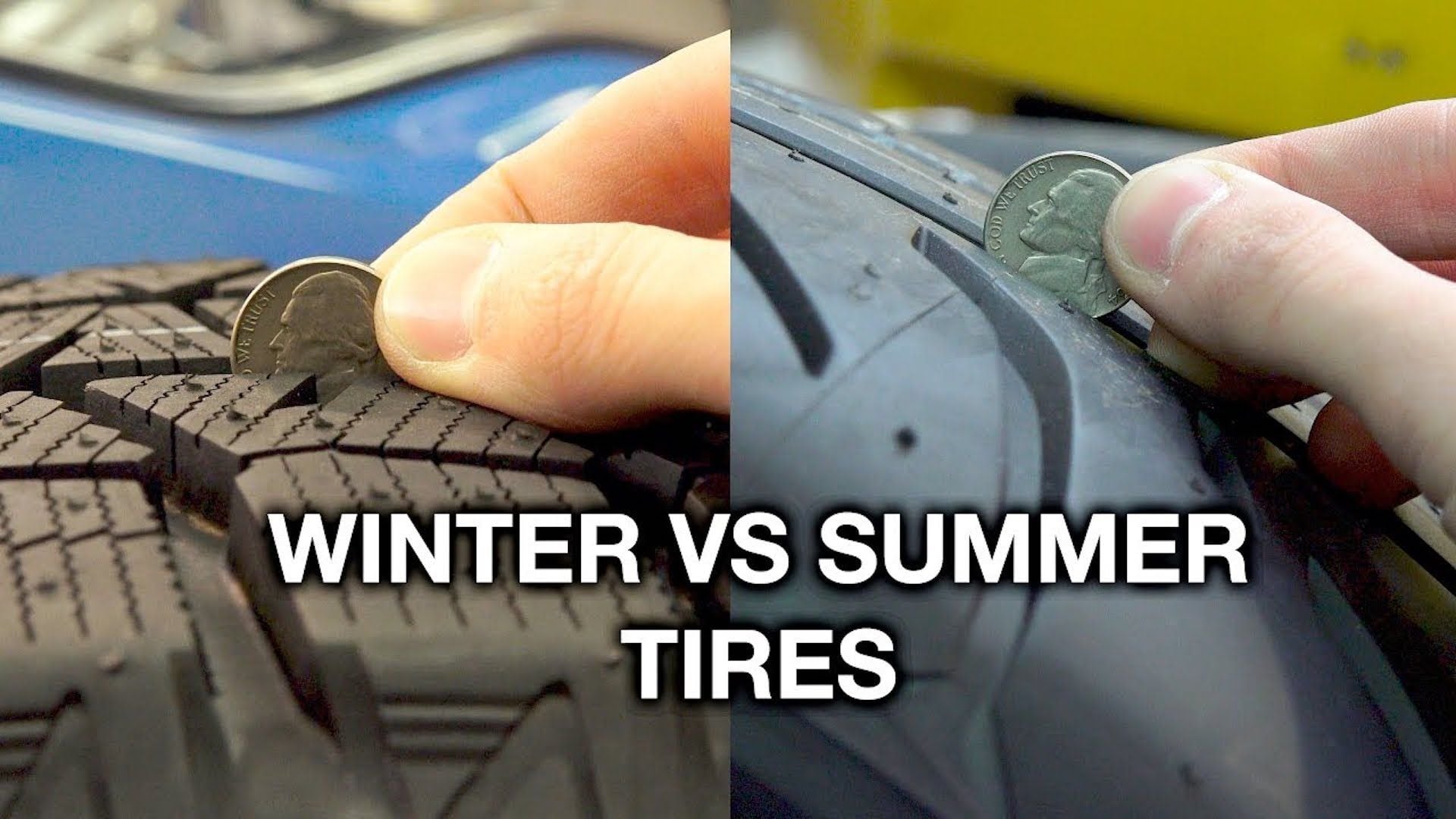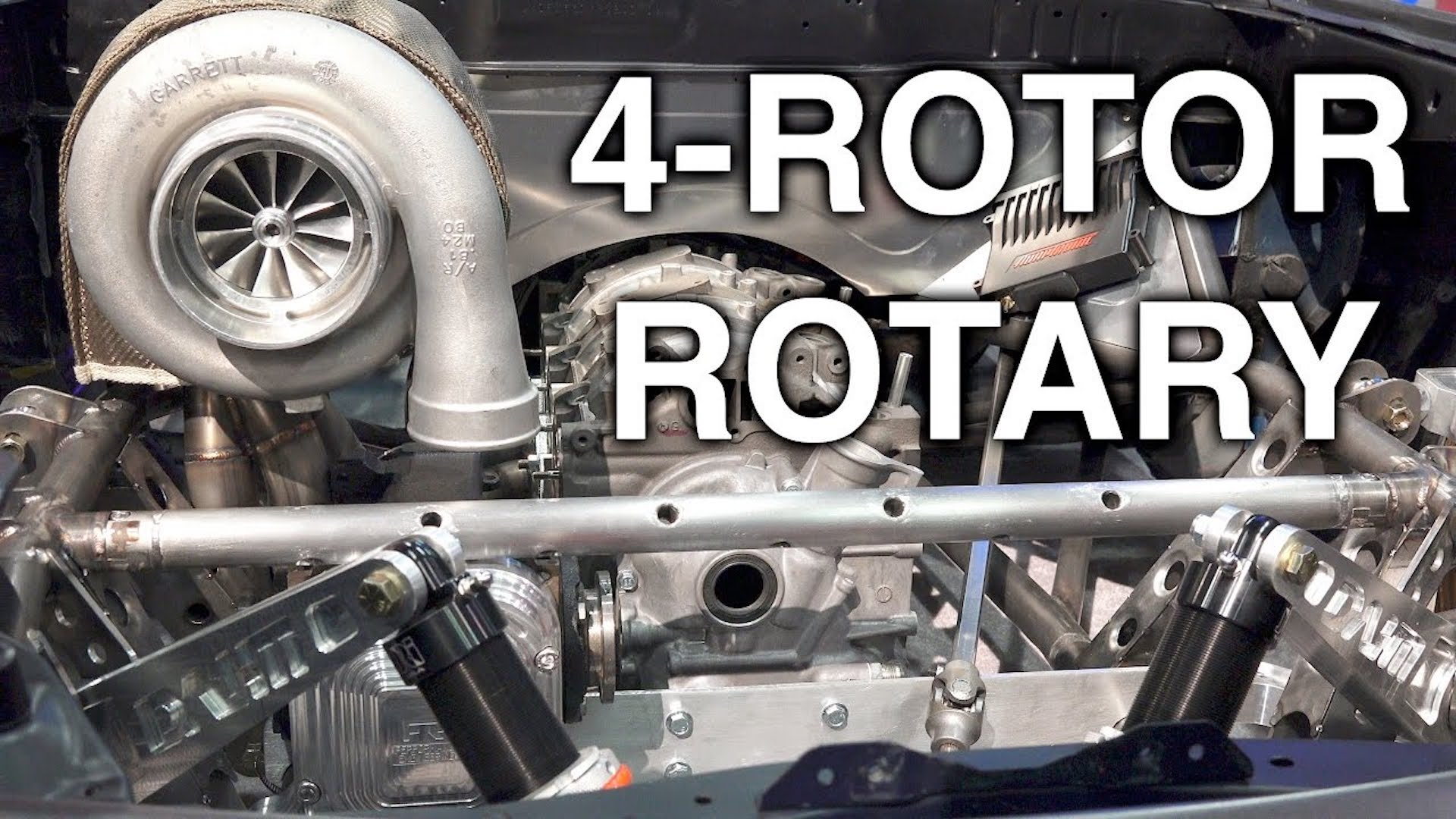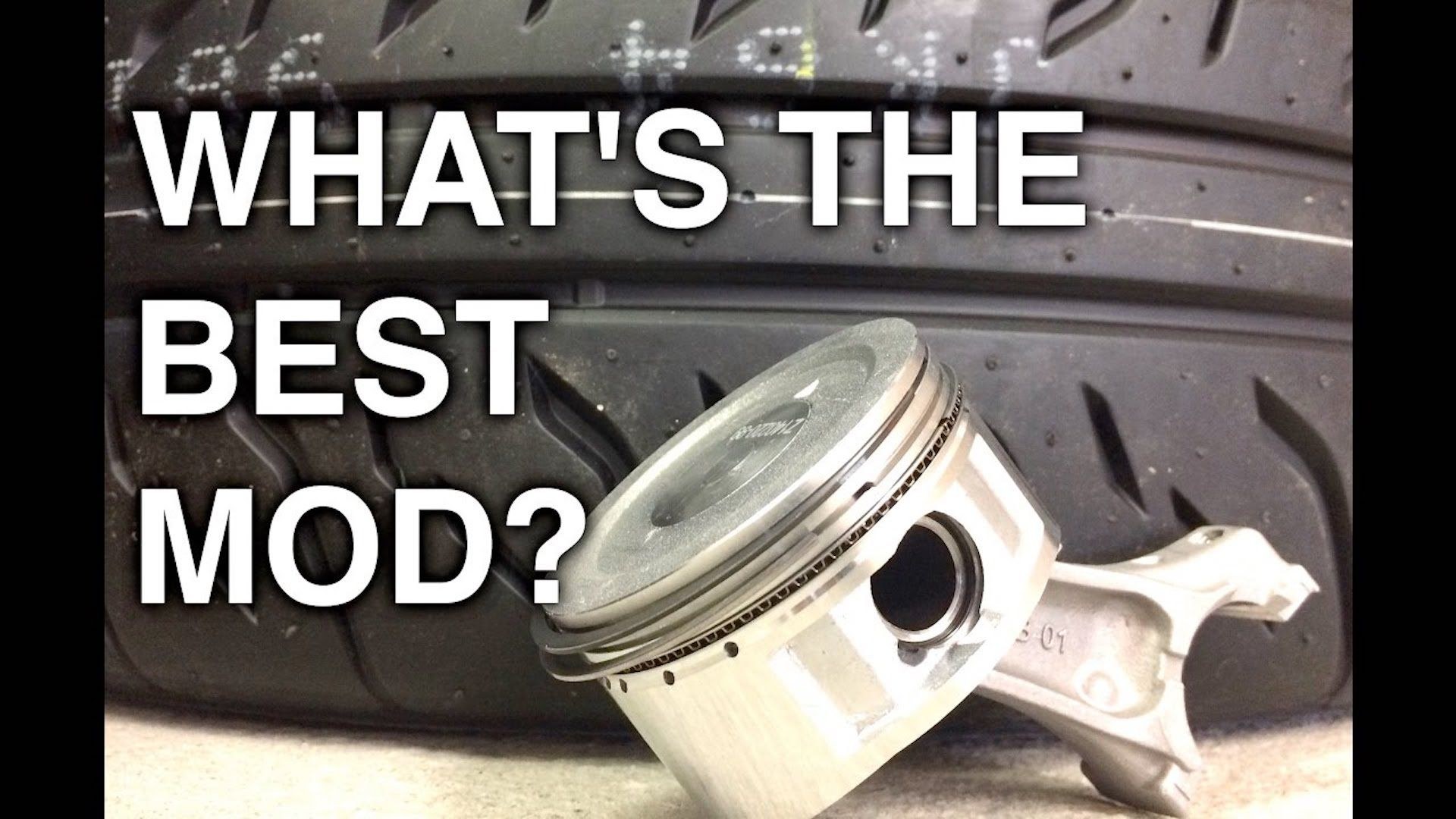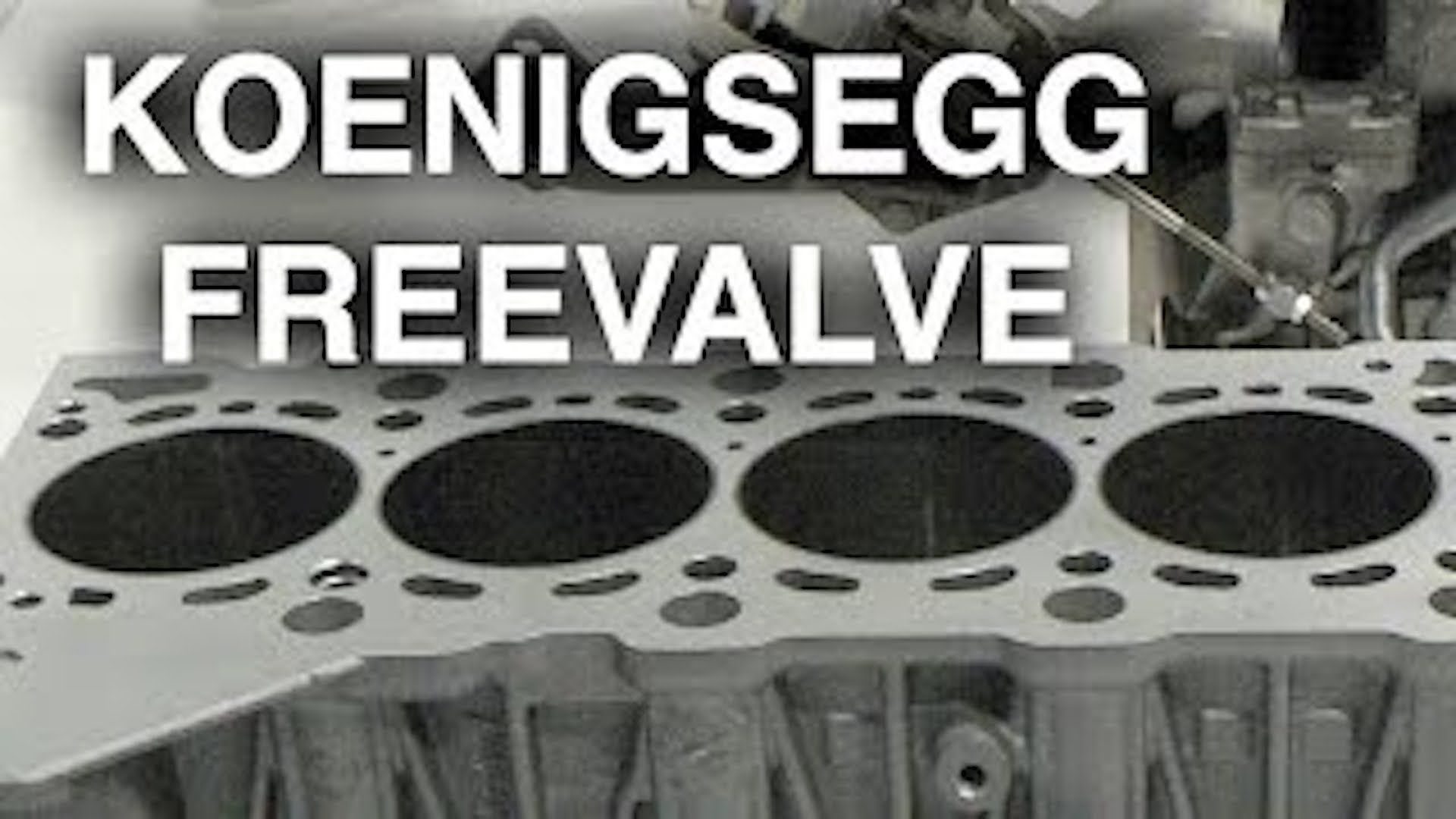Engineering Explained
-

A rev limiter is there for your benefit. Without it, you'd be facing down a potential busted engine and trickier launches, especially in higher horsepower vehicles. If you have a vehicle with a launch control mode, then you have a car fitted with a two-step rev limiter. One step is designed to help you get off the line as quickly and efficiently as possible, while the other step is there to protect your precious spinning engine parts. Jason Fenske from Engineering Explained is here to tell you how it all works. With the first rev limiter, the computer tells the engine to hold at a certain...
-
 Learn what a final drive ratio is and how it affects your car
Learn what a final drive ratio is and how it affects your carThe final drive ratio is the last bit of gearing between your transmission and the driven wheels. By changing it, you can affect the performance of your car, rather dramatically in some cases. In general, a lower final drive ratio will lead to less torque at the wheels but a higher top speed...
Viknesh Vijayenthiran -
 Here are the differences between Variable Valve Lift and Variable Valve Timing
Here are the differences between Variable Valve Lift and Variable Valve TimingEngines are complex bits of machinery. At their core level, yes, it's easy to understand what is happening. Air and fuel enter the engine where they are ignited and combustion occurs resulting in power that turns shafts. CHECK OUT: Classic video explains how a planetary gear set works In a modern...
Jeff Glucker -
 Can a big enough hill recharge a Tesla?
Can a big enough hill recharge a Tesla?Like most other electric and hybrid vehicles on the market, the Tesla [NSDQ:TSLA] Model S and Model X are both fitted with a system that allows them to recapture energy and put it back into the battery pack. The most common manner in which this is done is through a regenerative braking system...
Jeff Glucker -
 The differences between wet and dry sump oil systems
The differences between wet and dry sump oil systemsAll of those moving parts in your engine create heat through friction, and that heat needs to be mitigated or bad things will happen. This is the task of your oil. It lubricates and cools engine components. Your vehicle will most likely move this oil around by way of a wet sump oil system. If you...
Jeff Glucker -
 How Nissan's VVEL engines work
How Nissan's VVEL engines workThe letters VVEL are important to the architecture of Nissan engines. Those four letters stand for Variable Valve Event and Lift. What that refers to is a Nissan engine that operates without the use of a throttle body. Instead, the air flowing into the engine is metered by way of the cams and...
Jeff Glucker -

Believe it or not, the 2017 Honda Accord Hybrid sedan actually has something in common with an ultra-exotic hypercar produced by the Swedish brand Koenigsegg. That seems far fetched, and no we're not referring to the fact that both vehicles utilize four wheels wrapped in rubber tires. The similarity is related to the fact that both the Accord and the Koenigsegg Regera make use of a hybrid system that allows the engine to directly drive the driven wheels without going through a transmission. CHECK OUT: Ford Mustang Hybrid due in 2020, and it may be powerful Our friend Jason Fenske from...
-
 How to change a car's differential fluid
How to change a car's differential fluidOur friend Jason Fenske from Engineering Explained has already taught us how to change the oil in our cars. It's an easy process, and it's one that will allow you to get closer to your own machine while making sure it's properly maintained. Now it's time to take things a step further. Jason is...
Jeff Glucker -
 The five best basic modifications for your car
The five best basic modifications for your carEngineering Explained host Jason Fenske is currently planning the modifications for his own project Honda S2000. He has some great things in store for that car, but he also has a bit of advice for those of us looking to modify our own cars. To that end, he's created a list of his top five best...
Jeff Glucker -
 "Engineering Explained" shares its plans for its Honda S2000 project car
"Engineering Explained" shares its plans for its Honda S2000 project carOur friend Jason Fenske of Engineering Explained has been teaching us all about the engineering behind cars. His lessons range from maintenance considerations like how to change your oil to describing automotive systems like how rotary engines work to the physics of speed, best exemplified by his...
Kirk Bell -
 How winter tires differ from summer tires
How winter tires differ from summer tiresWinter has begun to embrace the country in its icy grasp, and that means it's past time you started thinking about winter tires. But are they really worth it and what do they actually do? Our friend Jason Fenske from Engineering Explained is here to help us understand the massive difference winter...
Jeff Glucker -
 It's this easy to change your own oil
It's this easy to change your own oilOur friend Jason Fenske from Engineering Explained has been teaching us a lot about our favorite subject: cars. Today, he's here to talk about something that just might inspire you to get your hands dirty under the hood of your own car. It's basic, but every car guy should know it. The topic of the...
Jeff Glucker -

Besides fuel, oil is the lifeblood of your vehicle. It keeps your engine rotating smoothly. This is accomplished by the properties of oil that allow it to lubricate moving parts and reduce heat generated by friction. If the moving parts in your engine weren't lubricated, you'd hear a lot of screeching noise followed by a car that doesn't really want to go anywhere. How does it all work? Jason Fenske from Engineering Explained is here to walk us through it all. CHECK OUT: 2018 Mercedes-AMG E63 first drive review: The deep-knee Benz The discussion above goes into the nitty gritty related to how...
-
 How to safely lift your car off the ground with jack stands
How to safely lift your car off the ground with jack standsIf you're going to do work on your own vehicle, you'll most likely need to get underneath it at some point. Unless you own a monster truck, this means that you're going to have to lift your car in the air. This is intimidating for many, but there's a way to make it less so and Engineering Explained...
Jeff Glucker -
 The science behind the record-breaking Dodge Viper ACR
The science behind the record-breaking Dodge Viper ACRWhen Dodge brought its Viper ACR to the production car party back in 2015, the automaker also brought a long a sheet filled with brand new track records. The ACR broke production-car lap records at 13 different tracks. These weren't rinky-dink little local circuits that you've never heard of...
Jeff Glucker -
 How the elusive 4-rotor rotary engine works
How the elusive 4-rotor rotary engine worksAs the old saying goes, there is no replacement for displacement. That's not the case when it comes to rotary engines, which typically have very small displacement. Instead of cubes, if you want a rotary to make more power you do two things: add more rotors and/or slap on a turbocharger or two...
Kirk Bell -
 Should my car have stiff or soft springs?
Should my car have stiff or soft springs?Ride comfort and performance. Creating a suspension system that serves both of those masters successfully is a challenging task. All sorts of technology can help, from air suspensions to magnetic dampers and so on. But what is best when it comes to a soft or stiff spring setup? What do you really...
Jeff Glucker -
 What is the best mod for faster lap times?
What is the best mod for faster lap times?Modifying you car can get expensive very quickly. Still, you want to take it to the track and any method of eeking out a quicker lap time is one at which you're going to look. Where do you get the most bang for your buck? Jason from Engineering Explained is here to break it all down with science...
Jeff Glucker -

Drag. Friction. Weight distribution and load. These are things you need to consider when you begin to think about how tires work. Yes, those four bits of rubber are your only connection to the ground and they keep your car moving in the direction you desire. Most of us think that a wider tire is better, and if it's more grip you seek then you're probably right. This is why. Jason from Engineering Explained is ready to break it all down. Basically, you want an evenly spread load across your tires. If you make your tires wider, it becomes easier to achieve this. A larger contact patch on the...
-
 Developing parts for road cars vs. race cars
Developing parts for road cars vs. race carsRoad cars and race cars are very different. The cars we buy for every day driving are much heavier, due in part to safety and emissions equipment. Race cars shed every ounce of weight in the pursuit of speed. But those aren't the only differences. In some ways, road cars that are meant to last for...
Kirk Bell -
 How Mercedes' Active Body Control works
How Mercedes' Active Body Control worksMercedes-Benz vehicles are notorious for their smooth ride quality. Bumps and ruts just don't bother passengers in Mercedes vehicles like they do in other cars. How does Mercedes do it? Jason Fenske from Engineering Explained is here to tell us. In this video, Jason analyzes how two Mercedes...
Kirk Bell -
 Let's go for a ride along in a 600-hp Subaru Rallycross car
Let's go for a ride along in a 600-hp Subaru Rallycross carJason from Engineering Explained sits in the passenger seat for this ride along. He's accompanied by David Higgins (yes, brother of the also crazy-talented Mark) and the pair are set to explore a lap of the Global Rallycross Los Angeles course. The car here is a Subaru racing machine that's capable...
Jeff Glucker -
 How Volkswagen's DSG works
How Volkswagen's DSG worksEngineering Explained and The Humble Mechanic team are two YouTube channels with the goal of teaching us more about the cars we drive. Today, they get together to break down how Volkswagen's dual-clutch gearbox works. Volkswagen calls it the Direct-Shift Gearbox, or DSG for short. With an engineer...
Jeff Glucker -
 'Engineering Explained' tackles Koenigsegg's camless engine
'Engineering Explained' tackles Koenigsegg's camless engineAn internal combustion engine needs a few things to work. One of those parts that makes an engine do its thing is a piece called the camshaft. This helps control the timing of the intake and exhaust valves that sit at the top of the engine. Koenigsegg is setting out to revamp anything it can...
Jeff Glucker









